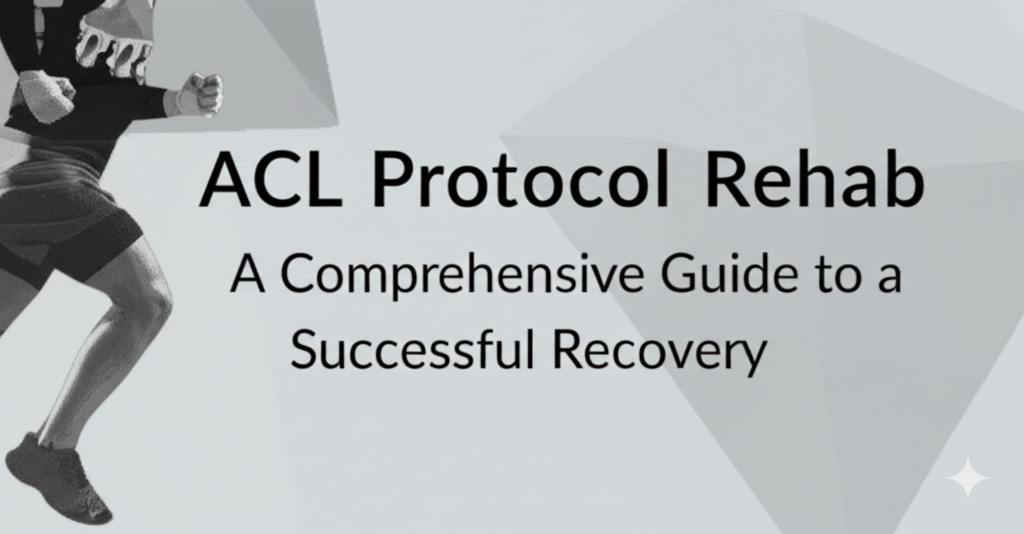Recovering from an anterior cruciate ligament (ACL) injury can be a long and challenging journey. However, with the right rehabilitation protocol, athletes and individuals alike can regain their strength, mobility, and return to their normal activities. This guide provides a thorough overview of the ACL rehab process, including important phases, tips for success, and how to ensure a smooth recovery.
What is ACL Injury Rehabilitation?
ACL injury rehabilitation, often referred to as ACL protocol rehab, is a structured and progressive plan designed to help individuals recover from an ACL tear or surgery. The goal of this rehab process is to restore strength, flexibility, and functionality to the knee, ultimately enabling the individual to return to their sports or daily activities without pain or limitations.
Why is ACL Rehab Important?
ACL rehab is crucial because it not only promotes physical healing but also reduces the risk of re-injury. Without proper rehabilitation, individuals may experience long-term knee instability, pain, and weakness, which could hinder their ability to perform routine activities or engage in sports. A well-structured ACL protocol ensures that the knee regains full function, helping patients return to their pre-injury state as safely as possible.
Key Phases of ACL Rehabilitation
ACL rehabilitation typically consists of four main phases, each targeting different aspects of recovery. The duration of each phase can vary depending on the severity of the injury, the individual’s progress, and the specific protocols prescribed by the healthcare provider.
Phase 1: Immediate Post-Surgery (0-2 Weeks)
The primary goal during this phase is to reduce pain and swelling while protecting the newly repaired ACL. Physical activity is limited, but certain movements like ankle pumps and gentle quadriceps contractions are encouraged to maintain circulation and prevent muscle atrophy.
Key Activities:
- Rest and Ice: Applying ice frequently to control swelling.
- Elevation: Elevating the leg to reduce inflammation.
- Pain Management: Using prescribed pain medications to control discomfort.
- Range of Motion (ROM) Exercises: Begin with gentle knee flexion and extension exercises to regain some mobility.
Phase 2: Early Recovery (2-6 Weeks)
During this phase, the focus shifts to improving knee mobility and preventing muscle weakness. The rehab program emphasizes exercises that promote muscle strength, particularly in the quadriceps and hamstrings, to support the knee joint.
Key Activities:
- Leg Raises: Start strengthening the quadriceps and hamstrings.
- Weight-Bearing Exercises: Gradually begin to put weight on the injured leg.
- Knee Flexion and Extension: Continue to work on improving range of motion.
- Aquatic Therapy (if applicable): Water-based exercises can help reduce stress on the knee while improving mobility.
Phase 3: Strengthening (6-12 Weeks)
At this stage, rehabilitation intensifies with a greater focus on rebuilding strength, stability, and endurance in the knee joint. The goal is to restore muscle function and prepare the individual for more dynamic movements.
Key Activities:
- Strengthening Exercises: Incorporate squats, lunges, and leg presses to build strength in the quadriceps and hamstrings.
- Balance Training: Use balance boards or stability exercises to enhance proprioception and knee stability.
- Cardiovascular Conditioning: Start incorporating low-impact activities like cycling or swimming to improve cardiovascular fitness without stressing the knee.
Phase 4: Return to Sports (3-12 Months)
The final phase focuses on returning to sport-specific training, agility exercises, and improving overall knee function. The individual should work on drills that mimic the movements of their sport to ensure that the knee can handle the demands of physical activity.
Key Activities:
- Agility Drills: Start incorporating ladder drills, cone drills, and lateral movements.
- Plyometric Training: Include exercises like jump squats and box jumps to build explosive strength.
- Sport-Specific Movements: Gradually reintroduce sport-specific drills, such as running or cutting.
Tips for a Successful ACL Rehab
While following the rehab protocol is essential, there are several strategies you can implement to optimize your recovery and achieve the best results.
1. Stay Consistent with Exercises
Rehabilitation requires dedication and consistency. Stick to the prescribed exercises and ensure you perform them as directed by your physical therapist. Missing sessions can delay your progress and hinder your recovery.
2. Listen to Your Body
Recovery can be a painful process, but you should never push through excessive pain. Listen to your body, and if something doesn’t feel right, consult with your healthcare provider. A slow and steady recovery is far better than rushing back to activity too soon.
3. Focus on Nutrition
Good nutrition plays a key role in your recovery. A diet rich in protein, vitamins, and minerals helps promote healing and tissue repair. Omega-3 fatty acids, in particular, can help reduce inflammation in the body.
4. Stay Positive and Patient
Patience is vital when recovering from an ACL injury. Progress may be slow at times, but it’s important to stay motivated and maintain a positive outlook. Celebrate small victories along the way, and trust the process.
Conclusion: Get Back on Your Feet with ACL Rehab
Recovering from an ACL injury is undoubtedly a journey, but with the right rehabilitation protocol and mindset, it’s entirely possible to regain full function and return to your normal activities. By following a well-structured rehab plan, staying consistent with exercises, and listening to your body, you can minimize the risk of re-injury and get back to living life to the fullest.
If you’re currently undergoing ACL rehab or have an upcoming surgery, work closely with your healthcare provider and physical therapist to create a customized recovery plan. Patience and persistence will pay off, and soon you’ll be back on your feet stronger than ever.

Kallie Snyder is an author at Stonegate Health Rehab, providing valuable insights, recovery guidance, and rehab resources to help individuals achieve better health and well-being.
